ASX Glossary - I: Difference between revisions
Jump to navigation
Jump to search
No edit summary |
No edit summary |
||
| Line 148: | Line 148: | ||
</head> | </head> | ||
<body> | <body> | ||
<table> | |||
<tr | <tr> | ||
<td class="term"> | <td class="term"> | ||
<a href="https://wiki.alsresume.com/index.php?title= | <a href="https://wiki.alsresume.com/index.php?title=Identification_friend_or_foe" target="_blank" | ||
style="color: #40E0D0; font-weight: bold; text-decoration: none; cursor: pointer;" | style="color: #40E0D0; font-weight: bold; text-decoration: none; cursor: pointer;" | ||
onmouseover="this.style.color='#ff4f01';" | onmouseover="this.style.color='#ff4f01';" | ||
onmouseout="this.style.color='#40E0D0';"> | onmouseout="this.style.color='#40E0D0';">Identification Friend or Foe (IFF) | ||
</a> | </a> | ||
</td> | </td> | ||
<td class="description"> | <td class="description">IFF is a radar-based system used in military and civilian aviation to identify aircraft as friendly or unknown. Transponders transmit coded signals to air traffic control and military defense systems, allowing for quick identification. It helps prevent friendly fire incidents and ensures airspace security.</td> | ||
<td class="image-column"><img src="https://www.alsresume.com/wp-content/uploads/2025/02/IFF.jpg" alt="Identification Friend or Foe (IFF)"></td> | |||
<td class="image-column"> | |||
</tr> | </tr> | ||
<tr> | |||
<tr | |||
<td class="term"> | <td class="term"> | ||
<a href="https://wiki.alsresume.com/index.php?title= | <a href="https://wiki.alsresume.com/index.php?title=Ground_Idle" target="_blank" | ||
style="color: #40E0D0; font-weight: bold; text-decoration: none; cursor: pointer;" | style="color: #40E0D0; font-weight: bold; text-decoration: none; cursor: pointer;" | ||
onmouseover="this.style.color='#ff4f01';" | onmouseover="this.style.color='#ff4f01';" | ||
onmouseout="this.style.color='#40E0D0';"> | onmouseout="this.style.color='#40E0D0';">Idle Thrust | ||
</a> | </a> | ||
</td> | </td> | ||
<td class="description"> | <td class="description">Idle thrust is the minimum engine power setting required to sustain operation without producing significant thrust. It is used during taxiing, descent, and when reducing speed in flight. Managing idle thrust efficiently conserves fuel and prevents unnecessary engine wear.</td> | ||
<td class="image-column"><img src="https://www.alsresume.com/wp-content/uploads/2025/02/Idle-Throttle.jpg" alt="Idle Thrust"></td> | |||
<td class="image-column"> | |||
</tr> | </tr> | ||
<tr> | |||
<tr | |||
<td class="term"> | <td class="term"> | ||
<a href="https://wiki.alsresume.com/index.php?title= | <a href="https://wiki.alsresume.com/index.php?title=Instrument_landing_system" target="_blank" | ||
style="color: #40E0D0; font-weight: bold; text-decoration: none; cursor: pointer;" | style="color: #40E0D0; font-weight: bold; text-decoration: none; cursor: pointer;" | ||
onmouseover="this.style.color='#ff4f01';" | onmouseover="this.style.color='#ff4f01';" | ||
onmouseout="this.style.color='#40E0D0';"> | onmouseout="this.style.color='#40E0D0';">ILS (Instrument Landing System) | ||
</a> | </a> | ||
</td> | </td> | ||
<td class="description"> | <td class="description">The Instrument Landing System is a precision approach aid using radio signals to guide aircraft to a safe landing. It provides lateral (localizer) and vertical (glide slope) guidance, ensuring safe descents in low visibility conditions. ILS is widely used at major airports worldwide.</td> | ||
<td class="image-column"><img src="https://www.alsresume.com/wp-content/uploads/2025/02/ILS.jpg" alt="ILS (Instrument Landing System)"></td> | |||
<td class="image-column"> | |||
</tr> | </tr> | ||
<tr> | |||
<tr | |||
<td class="term"> | <td class="term"> | ||
<a href="https://wiki.alsresume.com/index.php?title= | <a href="https://wiki.alsresume.com/index.php?title=ILS_Critical_Area" target="_blank" | ||
style="color: #40E0D0; font-weight: bold; text-decoration: none; cursor: pointer;" | style="color: #40E0D0; font-weight: bold; text-decoration: none; cursor: pointer;" | ||
onmouseover="this.style.color='#ff4f01';" | onmouseover="this.style.color='#ff4f01';" | ||
onmouseout="this.style.color='#40E0D0';"> | onmouseout="this.style.color='#40E0D0';">ILS Critical Area | ||
</a> | </a> | ||
</td> | </td> | ||
<td class="description"> | <td class="description">The ILS critical area is a zone near the runway where vehicle or aircraft presence could interfere with the instrument landing system signals. Air traffic controllers restrict movement in this area during low-visibility landings.</td> | ||
<td class="image-column"><img src="https://www.alsresume.com/wp-content/uploads/2025/03/ILS-CA.jpg" alt="ILS Critical Area"></td> | |||
<td class="image-column"> | |||
</tr> | </tr> | ||
<tr> | |||
<tr | |||
<td class="term"> | <td class="term"> | ||
<a href="https://wiki.alsresume.com/index.php?title= | <a href="https://wiki.alsresume.com/index.php?title=Instrument_meteorological_conditions" target="_blank" | ||
style="color: #40E0D0; font-weight: bold; text-decoration: none; cursor: pointer;" | style="color: #40E0D0; font-weight: bold; text-decoration: none; cursor: pointer;" | ||
onmouseover="this.style.color='#ff4f01';" | onmouseover="this.style.color='#ff4f01';" | ||
onmouseout="this.style.color='#40E0D0';"> | onmouseout="this.style.color='#40E0D0';">IMC (Instrument Meteorological Conditions) | ||
</a> | </a> | ||
</td> | </td> | ||
<td class="description"> | <td class="description">IMC refers to weather conditions where pilots must rely on instruments rather than visual cues to navigate. This includes flying in clouds, fog, or heavy precipitation. IMC conditions require an instrument rating and adherence to IFR (Instrument Flight Rules) for safe flight.</td> | ||
<td class="image-column"><img src="https://www.alsresume.com/wp-content/uploads/2025/02/IMC.jpg" alt="IMC (Instrument Meteorological Conditions)"></td> | |||
<td class="image-column"> | |||
</tr> | </tr> | ||
<tr> | |||
<tr | |||
<td class="term"> | <td class="term"> | ||
<a href="https://wiki.alsresume.com/index.php?title= | <a href="https://wiki.alsresume.com/index.php?title=Dual_ignition" target="_blank" | ||
style="color: #40E0D0; font-weight: bold; text-decoration: none; cursor: pointer;" | style="color: #40E0D0; font-weight: bold; text-decoration: none; cursor: pointer;" | ||
onmouseover="this.style.color='#ff4f01';" | onmouseover="this.style.color='#ff4f01';" | ||
onmouseout="this.style.color='#40E0D0';"> | onmouseout="this.style.color='#40E0D0';">Ignition System | ||
</a> | </a> | ||
</td> | </td> | ||
<td class="description"> | <td class="description">The ignition system in an aircraft engine initiates combustion by generating a high-voltage spark in the cylinders. It ensures reliable engine startup and smooth operation during flight.</td> | ||
<td class="image-column"><img src="https://www.alsresume.com/wp-content/uploads/2025/03/Ignition.jpg" alt="Ignition System"></td> | |||
<td class="image-column"> | |||
</tr> | </tr> | ||
<tr> | <tr> | ||
<td class="term"> | <td class="term"> | ||
<a href="https://wiki.alsresume.com/index.php?title= | <a href="https://wiki.alsresume.com/index.php?title=In-flight_entertainment" target="_blank" | ||
style="color: #40E0D0; font-weight: bold; text-decoration: none; cursor: pointer;" | style="color: #40E0D0; font-weight: bold; text-decoration: none; cursor: pointer;" | ||
onmouseover="this.style.color='#ff4f01';" | onmouseover="this.style.color='#ff4f01';" | ||
onmouseout="this.style.color='#40E0D0';"> | onmouseout="this.style.color='#40E0D0';">In-Flight Entertainment (IFE) | ||
</a> | </a> | ||
</td> | </td> | ||
<td class="description"> | <td class="description">In-flight entertainment consists of entertainment systems installed in passenger aircraft, offering movies, music, games, and internet connectivity. It enhances passenger comfort on long-haul flights, improving the overall travel experience.</td> | ||
<td class="image-column"><img src="https://www.alsresume.com/wp-content/uploads/2025/ | <td class="image-column"><img src="https://www.alsresume.com/wp-content/uploads/2025/03/IFE.jpg" alt="In-Flight Entertainment (IFE)"></td> | ||
</tr> | </tr> | ||
<tr> | |||
<tr | |||
<td class="term"> | <td class="term"> | ||
<a href="https://wiki.alsresume.com/index.php?title= | <a href="https://wiki.alsresume.com/index.php?title=Icing_(aeronautics)" target="_blank" | ||
style="color: #40E0D0; font-weight: bold; text-decoration: none; cursor: pointer;" | style="color: #40E0D0; font-weight: bold; text-decoration: none; cursor: pointer;" | ||
onmouseover="this.style.color='#ff4f01';" | onmouseover="this.style.color='#ff4f01';" | ||
onmouseout="this.style.color='#40E0D0';"> | onmouseout="this.style.color='#40E0D0';">In-Flight Icing | ||
</a> | </a> | ||
</td> | </td> | ||
<td class="description"> | <td class="description">In-flight icing occurs when supercooled water droplets freeze on an aircraft's surfaces. Ice buildup on wings, propellers, or control surfaces can reduce performance and increase drag. De-icing and anti-icing systems are used to prevent dangerous icing conditions.</td> | ||
<td class="image-column"><img src="https://www.alsresume.com/wp-content/uploads/2025/03/Icing.jpg" alt="In-Flight Icing"></td> | |||
<td class="image-column"> | |||
</tr> | </tr> | ||
<tr> | |||
<tr | |||
<td class="term"> | <td class="term"> | ||
<a href="https://wiki.alsresume.com/index.php?title= | <a href="https://wiki.alsresume.com/index.php?title=Indicated_airspeed" target="_blank" | ||
style="color: #40E0D0; font-weight: bold; text-decoration: none; cursor: pointer;" | style="color: #40E0D0; font-weight: bold; text-decoration: none; cursor: pointer;" | ||
onmouseover="this.style.color='#ff4f01';" | onmouseover="this.style.color='#ff4f01';" | ||
onmouseout="this.style.color='#40E0D0';"> | onmouseout="this.style.color='#40E0D0';">Indicated Airspeed (IAS) | ||
</a> | </a> | ||
</td> | </td> | ||
<td class="description"> | <td class="description">Indicated airspeed is the speed read directly from an aircraft’s airspeed indicator without corrections for altitude or temperature. It is crucial for safe flight operations, as many aircraft performance parameters, such as stall speed, are based on IAS rather than true airspeed.</td> | ||
<td class="image-column"><img src="https://www.alsresume.com/wp-content/uploads/2025/02/Indicated-Airspeed.jpg" alt="Indicated Airspeed (IAS)"></td> | |||
<td class="image-column"> | |||
</tr> | </tr> | ||
<tr> | |||
<tr | |||
<td class="term"> | <td class="term"> | ||
<a href="https://wiki.alsresume.com/index.php?title= | <a href="https://wiki.alsresume.com/index.php?title=Indian_Ocean_Flight_Corridor" target="_blank" | ||
style="color: #40E0D0; font-weight: bold; text-decoration: none; cursor: pointer;" | style="color: #40E0D0; font-weight: bold; text-decoration: none; cursor: pointer;" | ||
onmouseover="this.style.color='#ff4f01';" | onmouseover="this.style.color='#ff4f01';" | ||
onmouseout="this.style.color='#40E0D0';"> | onmouseout="this.style.color='#40E0D0';">Indian Ocean Flight Corridor | ||
</a> | </a> | ||
</td> | </td> | ||
<td class="description"> | <td class="description">A designated air traffic route over the Indian Ocean used primarily for long-haul flights between Asia, Africa, and Australia. This corridor is managed by international aviation authorities to ensure efficient and safe airspace utilization.</td> | ||
<td class="image-column"><img src="https://www.alsresume.com/wp-content/uploads/2025/02/IOFC.jpg" alt="Indian Ocean Flight Corridor"></td> | |||
<td class="image-column"> | |||
</tr> | </tr> | ||
<tr> | |||
<tr | |||
<td class="term"> | <td class="term"> | ||
<a href="https://wiki.alsresume.com/index.php?title= | <a href="https://wiki.alsresume.com/index.php?title=Lift-induced_drag" target="_blank" | ||
style="color: #40E0D0; font-weight: bold; text-decoration: none; cursor: pointer;" | style="color: #40E0D0; font-weight: bold; text-decoration: none; cursor: pointer;" | ||
onmouseover="this.style.color='#ff4f01';" | onmouseover="this.style.color='#ff4f01';" | ||
onmouseout="this.style.color='#40E0D0';"> | onmouseout="this.style.color='#40E0D0';">Induced Drag | ||
</a> | </a> | ||
</td> | </td> | ||
<td class="description"> | <td class="description">Induced drag is a byproduct of lift generation, occurring when high-pressure air below the wing meets low-pressure air above it, creating vortices at the wingtips. It increases at lower speeds and is most significant during takeoff and landing.</td> | ||
<td class="image-column"><img src="https://www.alsresume.com/wp-content/uploads/2025/02/Induced-Drag.jpg" alt="Induced Drag"></td> | |||
<td class="image-column"> | |||
</tr> | </tr> | ||
<tr> | |||
<tr | |||
<td class="term"> | <td class="term"> | ||
<a href="https:// | <a href="https://wiki.alsresume.com/index.php?title=Inert_Gas_System_(IGS)" target="_blank" | ||
style="color: #40E0D0; font-weight: bold; text-decoration: none; cursor: pointer;" | style="color: #40E0D0; font-weight: bold; text-decoration: none; cursor: pointer;" | ||
onmouseover="this.style.color='#ff4f01';" | onmouseover="this.style.color='#ff4f01';" | ||
onmouseout="this.style.color='#40E0D0';"> | onmouseout="this.style.color='#40E0D0';">Inert Gas System (IGS) | ||
</a> | </a> | ||
</td> | </td> | ||
<td class="description"> | <td class="description">An inert gas system prevents fuel tank explosions by replacing oxygen with non-combustible gases such as nitrogen. It is used in commercial and military aircraft to enhance safety by reducing the risk of combustion in fuel tanks.</td> | ||
<td class="image-column"><img src="https://www.alsresume.com/wp-content/uploads/2025/03/Inert-Gas.jpg" alt="Inert Gas System (IGS)"></td> | |||
<td class="image-column"> | |||
</tr> | </tr> | ||
<tr> | |||
<tr | |||
<td class="term"> | <td class="term"> | ||
<a href="https://wiki.alsresume.com/index.php?title= | <a href="https://wiki.alsresume.com/index.php?title=Instrument_approach" target="_blank" | ||
style="color: #40E0D0; font-weight: bold; text-decoration: none; cursor: pointer;" | style="color: #40E0D0; font-weight: bold; text-decoration: none; cursor: pointer;" | ||
onmouseover="this.style.color='#ff4f01';" | onmouseover="this.style.color='#ff4f01';" | ||
onmouseout="this.style.color='#40E0D0';"> | onmouseout="this.style.color='#40E0D0';">Initial Approach Fix (IAF) | ||
</a> | </a> | ||
</td> | </td> | ||
<td class="description"> | <td class="description">The Initial Approach Fix is a designated point where an aircraft transitions from the en-route phase to the approach phase of a landing procedure. It is a critical part of instrument approaches, ensuring a smooth descent toward the runway.</td> | ||
<td class="image-column"><img src="https://www.alsresume.com/wp-content/uploads/2025/03/IAF.jpg" alt="Initial Approach Fix (IAF)"></td> | |||
<td class="image-column"> | |||
</tr> | </tr> | ||
<tr> | |||
<tr | |||
<td class="term"> | <td class="term"> | ||
<a href="https://wiki.alsresume.com/index.php?title= | <a href="https://wiki.alsresume.com/index.php?title=Instrument_approach" target="_blank" | ||
style="color: #40E0D0; font-weight: bold; text-decoration: none; cursor: pointer;" | style="color: #40E0D0; font-weight: bold; text-decoration: none; cursor: pointer;" | ||
onmouseover="this.style.color='#ff4f01';" | onmouseover="this.style.color='#ff4f01';" | ||
onmouseout="this.style.color='#40E0D0';"> | onmouseout="this.style.color='#40E0D0';">Inner Marker (IM) | ||
</a> | </a> | ||
</td> | </td> | ||
<td class="description"> | <td class="description">Part of the ILS system, the inner marker provides a final approach alert when an aircraft is very close to the runway. It emits a high-pitched sound in the cockpit, helping pilots judge altitude and descent during low-visibility landings.</td> | ||
<td class="image-column"><img src="https://www.alsresume.com/wp-content/uploads/2025/03/IM.jpg" alt="Inner Marker (IM)"></td> | |||
<td class="image-column"> | |||
</tr> | </tr> | ||
<tr> | |||
<tr | |||
<td class="term"> | <td class="term"> | ||
<a href="https://wiki.alsresume.com/index.php?title= | <a href="https://wiki.alsresume.com/index.php?title=Instrument_approach" target="_blank" | ||
style="color: #40E0D0; font-weight: bold; text-decoration: none; cursor: pointer;" | style="color: #40E0D0; font-weight: bold; text-decoration: none; cursor: pointer;" | ||
onmouseover="this.style.color='#ff4f01';" | onmouseover="this.style.color='#ff4f01';" | ||
onmouseout="this.style.color='#40E0D0';"> | onmouseout="this.style.color='#40E0D0';">Instrument Approach Procedure (IAP) | ||
</a> | </a> | ||
</td> | </td> | ||
<td class="description"> | <td class="description">An IAP is a standardized method for aircraft to approach and land at an airport using only instruments. These procedures ensure safety during poor visibility and involve a series of predetermined altitude and heading adjustments.</td> | ||
<td class="image-column"><img src="https://www.alsresume.com/wp-content/uploads/2025/03/Instrument-approach2.jpg" alt="Instrument Approach Procedure (IAP)"></td> | |||
<td class="image-column"> | |||
</tr> | </tr> | ||
<tr> | |||
<tr | |||
<td class="term"> | <td class="term"> | ||
<a href="https://wiki.alsresume.com/index.php?title= | <a href="https://wiki.alsresume.com/index.php?title=Instrument_flight_rules" target="_blank" | ||
style="color: #40E0D0; font-weight: bold; text-decoration: none; cursor: pointer;" | style="color: #40E0D0; font-weight: bold; text-decoration: none; cursor: pointer;" | ||
onmouseover="this.style.color='#ff4f01';" | onmouseover="this.style.color='#ff4f01';" | ||
onmouseout="this.style.color='#40E0D0';"> | onmouseout="this.style.color='#40E0D0';">Instrument Flight Rules (IFR) | ||
</a> | </a> | ||
</td> | </td> | ||
<td class="description"> | <td class="description">IFR is a set of regulations governing aircraft operations when pilots must rely on instruments due to poor visibility. IFR flights follow specific routes, altitude assignments, and air traffic control instructions to maintain separation and ensure safety.</td> | ||
<td class="image-column"><img src="https://www.alsresume.com/wp-content/uploads/2025/03/IFR.jpg" alt="Instrument Flight Rules (IFR)"></td> | |||
<td class="image-column"> | |||
</tr> | </tr> | ||
<tr> | |||
<tr | |||
<td class="term"> | <td class="term"> | ||
<a href="https://wiki.alsresume.com/index.php?title= | <a href="https://wiki.alsresume.com/index.php?title=Flight_instruments" target="_blank" | ||
style="color: #40E0D0; font-weight: bold; text-decoration: none; cursor: pointer;" | style="color: #40E0D0; font-weight: bold; text-decoration: none; cursor: pointer;" | ||
onmouseover="this.style.color='#ff4f01';" | onmouseover="this.style.color='#ff4f01';" | ||
onmouseout="this.style.color='#40E0D0';"> | onmouseout="this.style.color='#40E0D0';">Instrument Panel | ||
</a> | </a> | ||
</td> | </td> | ||
<td class="description"> | <td class="description">The instrument panel is the cockpit display that provides pilots with essential flight data, including altitude, airspeed, engine performance, and navigation information. It is the primary interface for monitoring and controlling an aircraft during flight.</td> | ||
<td class="image-column"><img src="https://www.alsresume.com/wp-content/uploads/2025/03/Instrument-panel.jpg" alt="Instrument Panel"></td> | |||
<td class="image-column"> | |||
</tr> | </tr> | ||
<tr> | |||
<tr | |||
<td class="term"> | <td class="term"> | ||
<a href="https://wiki.alsresume.com/index.php?title= | <a href="https://wiki.alsresume.com/index.php?title=Integrated_modular_avionics" target="_blank" | ||
style="color: #40E0D0; font-weight: bold; text-decoration: none; cursor: pointer;" | style="color: #40E0D0; font-weight: bold; text-decoration: none; cursor: pointer;" | ||
onmouseover="this.style.color='#ff4f01';" | onmouseover="this.style.color='#ff4f01';" | ||
onmouseout="this.style.color='#40E0D0';"> | onmouseout="this.style.color='#40E0D0';">Integrated Avionics | ||
</a> | </a> | ||
</td> | </td> | ||
<td class="description"> | <td class="description">Integrated avionics refers to advanced aircraft systems that combine multiple electronic functions, such as navigation, communication, and flight management, into a single system. These reduce pilot workload and improve overall aircraft performance.</td> | ||
<td class="image-column"><img src="https://www.alsresume.com/wp-content/uploads/2025/03/Integrated.jpg" alt="Integrated Avionics"></td> | |||
<td class="image-column"> | |||
</tr> | </tr> | ||
<tr> | |||
<tr | |||
<td class="term"> | <td class="term"> | ||
<a href="https://wiki.alsresume.com/index.php?title= | <a href="https://wiki.alsresume.com/index.php?title=Integrated_modular_avionics" target="_blank" | ||
style="color: # | style="color: #40E0D0; font-weight: bold; text-decoration: none; cursor: pointer;" | ||
onmouseover="this.style.color='#ff4f01';" | onmouseover="this.style.color='#ff4f01';" | ||
onmouseout="this.style.color='# | onmouseout="this.style.color='#40E0D0';">Integrated Flight Deck | ||
</a> | </a> | ||
</td> | </td> | ||
<td class="description"> | <td class="description">An integrated flight deck refers to a modern cockpit design where multiple systems, such as navigation, autopilot, and communication, are fully interconnected. It improves efficiency, automation, and pilot situational awareness.</td> | ||
<td class="image-column"><img src="https://www.alsresume.com/wp-content/uploads/2025/03/Integrated2.jpg" alt="Integrated Flight Deck"></td> | |||
<td class="image-column"> | |||
</tr> | </tr> | ||
<tr> | |||
<tr | |||
<td class="term"> | <td class="term"> | ||
<a href="https://wiki.alsresume.com/index.php?title= | <a href="https://wiki.alsresume.com/index.php?title=Integrated_standby_instrument_system" target="_blank" | ||
style="color: #40E0D0; font-weight: bold; text-decoration: none; cursor: pointer;" | style="color: #40E0D0; font-weight: bold; text-decoration: none; cursor: pointer;" | ||
onmouseover="this.style.color='#ff4f01';" | onmouseover="this.style.color='#ff4f01';" | ||
onmouseout="this.style.color='#40E0D0';"> | onmouseout="this.style.color='#40E0D0';">Integrated Standby Instrument System (ISIS) | ||
</a> | </a> | ||
</td> | </td> | ||
<td class="description"> | <td class="description">ISIS is a backup display that consolidates multiple essential flight instruments, such as airspeed, altitude, and attitude indicators, into a single unit. It provides redundancy in case of primary instrument failure.</td> | ||
<td class="image-column"><img src="https://www.alsresume.com/wp-content/uploads/2025/03/Integrated3.jpg" alt="Integrated Standby Instrument System (ISIS)"></td> | |||
<td class="image-column"> | |||
</tr> | </tr> | ||
<tr> | |||
<tr | |||
<td class="term"> | <td class="term"> | ||
<a href="https://wiki.alsresume.com/index.php?title= | <a href="https://wiki.alsresume.com/index.php?title=Intake_Manifold" target="_blank" | ||
style="color: #40E0D0; font-weight: bold; text-decoration: none; cursor: pointer;" | style="color: #40E0D0; font-weight: bold; text-decoration: none; cursor: pointer;" | ||
onmouseover="this.style.color='#ff4f01';" | onmouseover="this.style.color='#ff4f01';" | ||
onmouseout="this.style.color='#40E0D0';"> | onmouseout="this.style.color='#40E0D0';">Intake Manifold | ||
</a> | </a> | ||
</td> | </td> | ||
<td class="description"> | <td class="description">The intake manifold is a component in aircraft piston engines that distributes the air-fuel mixture to the cylinders. Proper intake manifold design ensures efficient combustion and optimal engine performance.</td> | ||
<td class="image-column"><img src="https://www.alsresume.com/wp-content/uploads/2025/03/Intake-manifold.jpg" alt="Intake Manifold"></td> | |||
<td class="image-column"> | |||
</tr> | </tr> | ||
<tr> | |||
<tr | |||
<td class="term"> | <td class="term"> | ||
<a href="https://wiki.alsresume.com/index.php?title= | <a href="https://wiki.alsresume.com/index.php?title=Intercooler" target="_blank" | ||
style="color: #40E0D0; font-weight: bold; text-decoration: none; cursor: pointer;" | style="color: #40E0D0; font-weight: bold; text-decoration: none; cursor: pointer;" | ||
onmouseover="this.style.color='#ff4f01';" | onmouseover="this.style.color='#ff4f01';" | ||
onmouseout="this.style.color='#40E0D0';"> | onmouseout="this.style.color='#40E0D0';">Intercooler | ||
</a> | </a> | ||
</td> | </td> | ||
<td class="description"> | <td class="description">An intercooler is a heat exchanger used in aircraft turbocharged engines to reduce the temperature of compressed air before it enters the engine. This improves efficiency and prevents overheating, especially in high-performance aircraft.</td> | ||
<td class="image-column"><img src="https://www.alsresume.com/wp-content/uploads/2025/03/intercooler.jpg" alt="Intercooler"></td> | |||
<td class="image-column"> | |||
</tr> | </tr> | ||
<tr> | |||
<td class="term"> | <td class="term"> | ||
<a href="https://wiki.alsresume.com/index.php?title= | <a href="https://wiki.alsresume.com/index.php?title=Parasitic_drag#Form_drag" target="_blank" | ||
style="color: #40E0D0; font-weight: bold; text-decoration: none; cursor: pointer;" | style="color: #40E0D0; font-weight: bold; text-decoration: none; cursor: pointer;" | ||
onmouseover="this.style.color='#ff4f01';" | onmouseover="this.style.color='#ff4f01';" | ||
onmouseout="this.style.color='#40E0D0';"> | onmouseout="this.style.color='#40E0D0';">Interference Drag | ||
</a> | </a> | ||
</td> | </td> | ||
<td class="description"> | <td class="description">Interference drag is an aerodynamic force that occurs when airflow from different aircraft surfaces, such as wings and fuselage, meets at sharp angles. It increases overall drag and reduces efficiency, requiring careful design to minimize its effects.</td> | ||
<td class="image-column"><img src="https://www.alsresume.com/wp-content/uploads/2025/03/Interface-Drag.jpg" alt="Interference Drag"></td> | |||
<td class="image-column"> | |||
</tr> | </tr> | ||
<tr> | |||
<tr | |||
<td class="term"> | <td class="term"> | ||
<a href="https://wiki.alsresume.com/index.php?title= | <a href="https://wiki.alsresume.com/index.php?title=Intermittent_fault" target="_blank" | ||
style="color: #40E0D0; font-weight: bold; text-decoration: none; cursor: pointer;" | style="color: #40E0D0; font-weight: bold; text-decoration: none; cursor: pointer;" | ||
onmouseover="this.style.color='#ff4f01';" | onmouseover="this.style.color='#ff4f01';" | ||
onmouseout="this.style.color='#40E0D0';"> | onmouseout="this.style.color='#40E0D0';">Intermittent Fault | ||
</a> | </a> | ||
</td> | </td> | ||
<td class="description"> | <td class="description">An intermittent fault in an aircraft system is a failure that occurs sporadically rather than continuously. These faults can be difficult to diagnose, requiring extensive troubleshooting and monitoring to identify root causes.</td> | ||
<td class="image-column"><img src="https://www.alsresume.com/wp-content/uploads/2025/03/Intermittent-fault.jpg" alt="Intermittent Fault"></td> | |||
<td class="image-column"> | |||
</tr> | </tr> | ||
<tr> | |||
<tr | |||
<td class="term"> | <td class="term"> | ||
<a href="https://wiki.alsresume.com/index.php?title= | <a href="https://wiki.alsresume.com/index.php?title=Command_guidance" target="_blank" | ||
style="color: #40E0D0; font-weight: bold; text-decoration: none; cursor: pointer;" | style="color: #40E0D0; font-weight: bold; text-decoration: none; cursor: pointer;" | ||
onmouseover="this.style.color='#ff4f01';" | onmouseover="this.style.color='#ff4f01';" | ||
onmouseout="this.style.color='#40E0D0';"> | onmouseout="this.style.color='#40E0D0';">Intercept Course | ||
</a> | </a> | ||
</td> | </td> | ||
<td class="description"> | <td class="description">An intercept course is a flight path designed to bring one aircraft into alignment with another, often used in military operations, air traffic control instructions, or navigation adjustments.</td> | ||
<td class="image-column"><img src="https://www.alsresume.com/wp-content/uploads/2025/03/Intercept-Course.jpg" alt="Intercept Course"></td> | |||
<td class="image-column"> | |||
</tr> | </tr> | ||
<tr> | |||
<tr | |||
<td class="term"> | <td class="term"> | ||
<a href="https://wiki.alsresume.com/index.php?title= | <a href="https://wiki.alsresume.com/index.php?title=International_Air_Transport_Association" target="_blank" | ||
style="color: #40E0D0; font-weight: bold; text-decoration: none; cursor: pointer;" | style="color: #40E0D0; font-weight: bold; text-decoration: none; cursor: pointer;" | ||
onmouseover="this.style.color='#ff4f01';" | onmouseover="this.style.color='#ff4f01';" | ||
onmouseout="this.style.color='#40E0D0';"> | onmouseout="this.style.color='#40E0D0';">International Air Transport Association (IATA) | ||
</a> | </a> | ||
</td> | </td> | ||
<td class="description"> | <td class="description">IATA is a global trade association that represents airlines, helping standardize airline policies, regulations, and safety procedures. It plays a significant role in aviation operations, including baggage handling, ticketing, and international airspace coordination.</td> | ||
<td class="image-column"><img src="https://www.alsresume.com/wp-content/uploads/2025/03/IATA.jpg" alt="International Air Transport Association (IATA)"></td> | |||
<td class="image-column"> | |||
</tr> | </tr> | ||
<tr> | |||
<tr | |||
<td class="term"> | <td class="term"> | ||
<a href="https://wiki.alsresume.com/index.php?title= | <a href="https://wiki.alsresume.com/index.php?title=International_Civil_Aviation_Organization" target="_blank" | ||
style="color: #40E0D0; font-weight: bold; text-decoration: none; cursor: pointer;" | style="color: #40E0D0; font-weight: bold; text-decoration: none; cursor: pointer;" | ||
onmouseover="this.style.color='#ff4f01';" | onmouseover="this.style.color='#ff4f01';" | ||
onmouseout="this.style.color='#40E0D0';"> | onmouseout="this.style.color='#40E0D0';">International Civil Aviation Organization (ICAO) | ||
</a> | </a> | ||
</td> | </td> | ||
<td class="description"> | <td class="description">ICAO is a United Nations agency responsible for establishing international aviation regulations, airspace management, and safety standards. It ensures consistent operational guidelines across countries to promote safe and efficient global air travel.</td> | ||
<td class="image-column"><img src="https://www.alsresume.com/wp-content/uploads/2025/03/ICAO.jpg" alt="ICAO"></td> | |||
<td class="image-column"> | |||
</tr> | </tr> | ||
<tr> | |||
<tr | |||
<td class="term"> | <td class="term"> | ||
<a href="https://wiki.alsresume.com/index.php?title= | <a href="https://wiki.alsresume.com/index.php?title=Instrument_approach" target="_blank" | ||
style="color: #40E0D0; font-weight: bold; text-decoration: none; cursor: pointer;" | style="color: #40E0D0; font-weight: bold; text-decoration: none; cursor: pointer;" | ||
onmouseover="this.style.color='#ff4f01';" | onmouseover="this.style.color='#ff4f01';" | ||
onmouseout="this.style.color='#40E0D0';"> | onmouseout="this.style.color='#40E0D0';">Intermediate Approach Segment | ||
</a> | </a> | ||
</td> | </td> | ||
<td class="description"> | <td class="description">The intermediate approach segment is the phase between the initial approach fix and the final approach fix during an instrument approach. It allows for aircraft stabilization before the final descent, ensuring a controlled and precise landing.</td> | ||
<td class="image-column"><img src="https://www.alsresume.com/wp-content/uploads/2025/03/Intermediate-Fix.jpg" alt="Intermediate Approach Segment"></td> | |||
<td class="image-column"> | |||
</tr> | </tr> | ||
<tr> | |||
<tr | |||
<td class="term"> | <td class="term"> | ||
<a href="https://wiki.alsresume.com/index.php?title= | <a href="https://wiki.alsresume.com/index.php?title=Inertial_navigation_system" target="_blank" | ||
style="color: #40E0D0; font-weight: bold; text-decoration: none; cursor: pointer;" | style="color: #40E0D0; font-weight: bold; text-decoration: none; cursor: pointer;" | ||
onmouseover="this.style.color='#ff4f01';" | onmouseover="this.style.color='#ff4f01';" | ||
onmouseout="this.style.color='#40E0D0';"> | onmouseout="this.style.color='#40E0D0';">Inertial Navigation System (INS) | ||
</a> | </a> | ||
</td> | </td> | ||
<td class="description"> | <td class="description">An INS is a self-contained navigation system that uses accelerometers and gyroscopes to track an aircraft’s movement without external signals. It provides accurate positioning in GPS-denied environments and is essential for military and long-range commercial operations.</td> | ||
<td class="image-column"><img src="https://www.alsresume.com/wp-content/uploads/2025/02/INS.jpg" alt="Inertial Navigation System (INS)"></td> | |||
<td class="image-column"> | |||
</tr> | </tr> | ||
<tr> | |||
<tr | |||
<td class="term"> | <td class="term"> | ||
<a href="https://wiki.alsresume.com/index.php?title= | <a href="https://wiki.alsresume.com/index.php?title=Aerial_refueling" target="_blank" | ||
style="color: #40E0D0; font-weight: bold; text-decoration: none; cursor: pointer;" | style="color: #40E0D0; font-weight: bold; text-decoration: none; cursor: pointer;" | ||
onmouseover="this.style.color='#ff4f01';" | onmouseover="this.style.color='#ff4f01';" | ||
onmouseout="this.style.color='#40E0D0';"> | onmouseout="this.style.color='#40E0D0';">Inflight Refueling | ||
</a> | </a> | ||
</td> | </td> | ||
<td class="description"> | <td class="description">Also known as aerial refueling, this is the process of transferring fuel from one aircraft to another in flight. It extends the range and endurance of military and special operations aircraft, allowing them to remain airborne for extended periods without landing.</td> | ||
<td class="image-column"><img src="https://www.alsresume.com/wp-content/uploads/2025/02/Inflight-Refueling.jpg" alt="Thumbnail">Inflight Refueling</td> | |||
<td class="image-column"> | |||
</tr> | </tr> | ||
</table> | |||
</body> | </body> | ||
</html> | </html> | ||
Latest revision as of 19:13, 23 April 2025

| Click on term for full definition | Click here to report corrections and content addition requests |
| Identification Friend or Foe (IFF) | IFF is a radar-based system used in military and civilian aviation to identify aircraft as friendly or unknown. Transponders transmit coded signals to air traffic control and military defense systems, allowing for quick identification. It helps prevent friendly fire incidents and ensures airspace security. |  |
| Idle Thrust | Idle thrust is the minimum engine power setting required to sustain operation without producing significant thrust. It is used during taxiing, descent, and when reducing speed in flight. Managing idle thrust efficiently conserves fuel and prevents unnecessary engine wear. |  |
| ILS (Instrument Landing System) | The Instrument Landing System is a precision approach aid using radio signals to guide aircraft to a safe landing. It provides lateral (localizer) and vertical (glide slope) guidance, ensuring safe descents in low visibility conditions. ILS is widely used at major airports worldwide. |  |
| ILS Critical Area | The ILS critical area is a zone near the runway where vehicle or aircraft presence could interfere with the instrument landing system signals. Air traffic controllers restrict movement in this area during low-visibility landings. |  |
| IMC (Instrument Meteorological Conditions) | IMC refers to weather conditions where pilots must rely on instruments rather than visual cues to navigate. This includes flying in clouds, fog, or heavy precipitation. IMC conditions require an instrument rating and adherence to IFR (Instrument Flight Rules) for safe flight. | 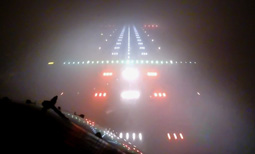 |
| Ignition System | The ignition system in an aircraft engine initiates combustion by generating a high-voltage spark in the cylinders. It ensures reliable engine startup and smooth operation during flight. |  |
| In-Flight Entertainment (IFE) | In-flight entertainment consists of entertainment systems installed in passenger aircraft, offering movies, music, games, and internet connectivity. It enhances passenger comfort on long-haul flights, improving the overall travel experience. |  |
| In-Flight Icing | In-flight icing occurs when supercooled water droplets freeze on an aircraft's surfaces. Ice buildup on wings, propellers, or control surfaces can reduce performance and increase drag. De-icing and anti-icing systems are used to prevent dangerous icing conditions. |  |
| Indicated Airspeed (IAS) | Indicated airspeed is the speed read directly from an aircraft’s airspeed indicator without corrections for altitude or temperature. It is crucial for safe flight operations, as many aircraft performance parameters, such as stall speed, are based on IAS rather than true airspeed. | 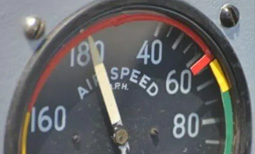 |
| Indian Ocean Flight Corridor | A designated air traffic route over the Indian Ocean used primarily for long-haul flights between Asia, Africa, and Australia. This corridor is managed by international aviation authorities to ensure efficient and safe airspace utilization. |  |
| Induced Drag | Induced drag is a byproduct of lift generation, occurring when high-pressure air below the wing meets low-pressure air above it, creating vortices at the wingtips. It increases at lower speeds and is most significant during takeoff and landing. |  |
| Inert Gas System (IGS) | An inert gas system prevents fuel tank explosions by replacing oxygen with non-combustible gases such as nitrogen. It is used in commercial and military aircraft to enhance safety by reducing the risk of combustion in fuel tanks. |  |
| Initial Approach Fix (IAF) | The Initial Approach Fix is a designated point where an aircraft transitions from the en-route phase to the approach phase of a landing procedure. It is a critical part of instrument approaches, ensuring a smooth descent toward the runway. |  |
| Inner Marker (IM) | Part of the ILS system, the inner marker provides a final approach alert when an aircraft is very close to the runway. It emits a high-pitched sound in the cockpit, helping pilots judge altitude and descent during low-visibility landings. | 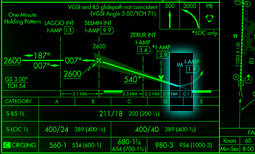 |
| Instrument Approach Procedure (IAP) | An IAP is a standardized method for aircraft to approach and land at an airport using only instruments. These procedures ensure safety during poor visibility and involve a series of predetermined altitude and heading adjustments. | 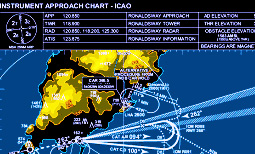 |
| Instrument Flight Rules (IFR) | IFR is a set of regulations governing aircraft operations when pilots must rely on instruments due to poor visibility. IFR flights follow specific routes, altitude assignments, and air traffic control instructions to maintain separation and ensure safety. |  |
| Instrument Panel | The instrument panel is the cockpit display that provides pilots with essential flight data, including altitude, airspeed, engine performance, and navigation information. It is the primary interface for monitoring and controlling an aircraft during flight. | 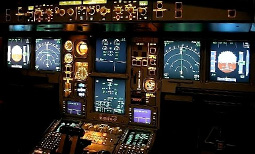 |
| Integrated Avionics | Integrated avionics refers to advanced aircraft systems that combine multiple electronic functions, such as navigation, communication, and flight management, into a single system. These reduce pilot workload and improve overall aircraft performance. |  |
| Integrated Flight Deck | An integrated flight deck refers to a modern cockpit design where multiple systems, such as navigation, autopilot, and communication, are fully interconnected. It improves efficiency, automation, and pilot situational awareness. |  |
| Integrated Standby Instrument System (ISIS) | ISIS is a backup display that consolidates multiple essential flight instruments, such as airspeed, altitude, and attitude indicators, into a single unit. It provides redundancy in case of primary instrument failure. |  |
| Intake Manifold | The intake manifold is a component in aircraft piston engines that distributes the air-fuel mixture to the cylinders. Proper intake manifold design ensures efficient combustion and optimal engine performance. |  |
| Intercooler | An intercooler is a heat exchanger used in aircraft turbocharged engines to reduce the temperature of compressed air before it enters the engine. This improves efficiency and prevents overheating, especially in high-performance aircraft. |  |
| Interference Drag | Interference drag is an aerodynamic force that occurs when airflow from different aircraft surfaces, such as wings and fuselage, meets at sharp angles. It increases overall drag and reduces efficiency, requiring careful design to minimize its effects. | 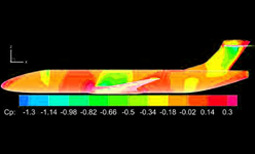 |
| Intermittent Fault | An intermittent fault in an aircraft system is a failure that occurs sporadically rather than continuously. These faults can be difficult to diagnose, requiring extensive troubleshooting and monitoring to identify root causes. | 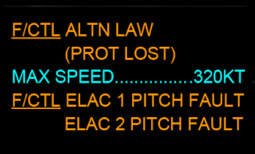 |
| Intercept Course | An intercept course is a flight path designed to bring one aircraft into alignment with another, often used in military operations, air traffic control instructions, or navigation adjustments. | 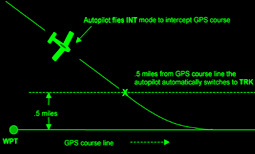 |
| International Air Transport Association (IATA) | IATA is a global trade association that represents airlines, helping standardize airline policies, regulations, and safety procedures. It plays a significant role in aviation operations, including baggage handling, ticketing, and international airspace coordination. | 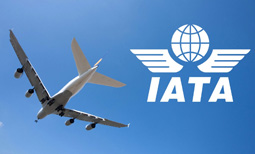 |
| International Civil Aviation Organization (ICAO) | ICAO is a United Nations agency responsible for establishing international aviation regulations, airspace management, and safety standards. It ensures consistent operational guidelines across countries to promote safe and efficient global air travel. |  |
| Intermediate Approach Segment | The intermediate approach segment is the phase between the initial approach fix and the final approach fix during an instrument approach. It allows for aircraft stabilization before the final descent, ensuring a controlled and precise landing. | 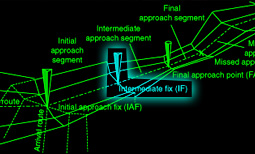 |
| Inertial Navigation System (INS) | An INS is a self-contained navigation system that uses accelerometers and gyroscopes to track an aircraft’s movement without external signals. It provides accurate positioning in GPS-denied environments and is essential for military and long-range commercial operations. |  |
| Inflight Refueling | Also known as aerial refueling, this is the process of transferring fuel from one aircraft to another in flight. It extends the range and endurance of military and special operations aircraft, allowing them to remain airborne for extended periods without landing. |  Inflight Refueling Inflight Refueling |
